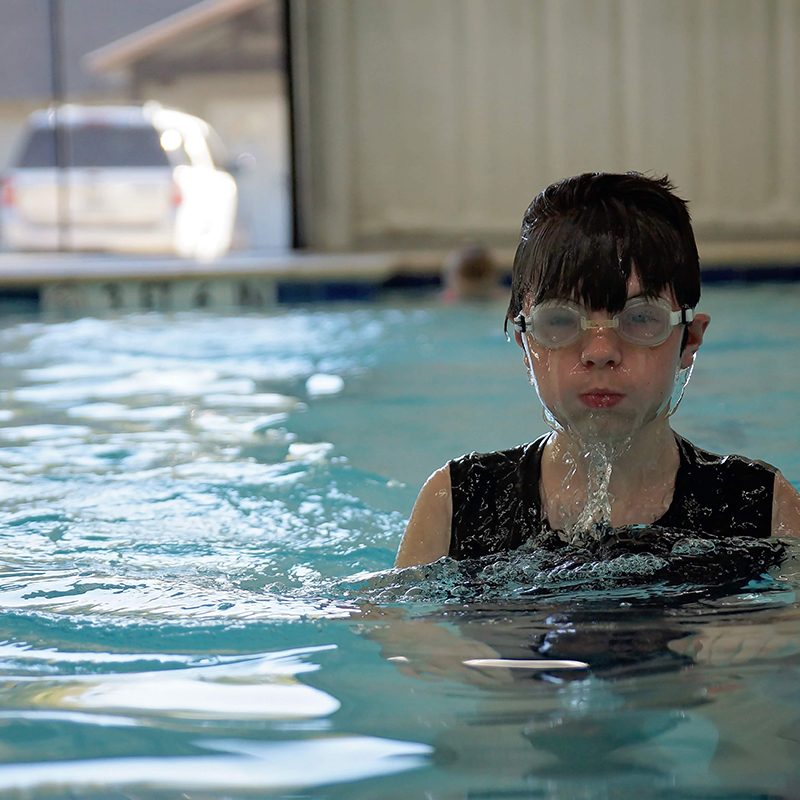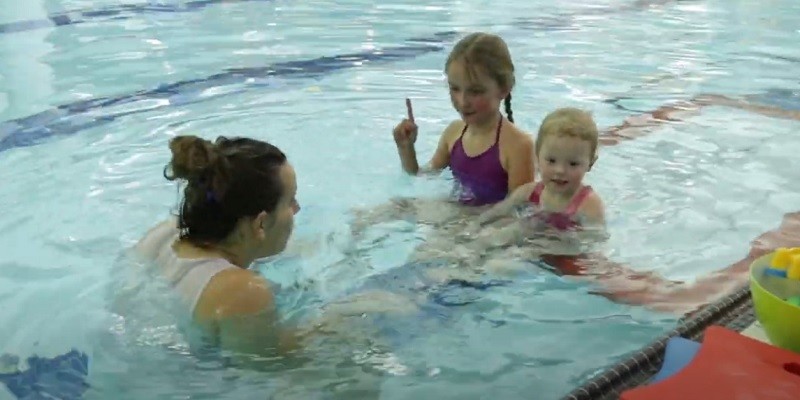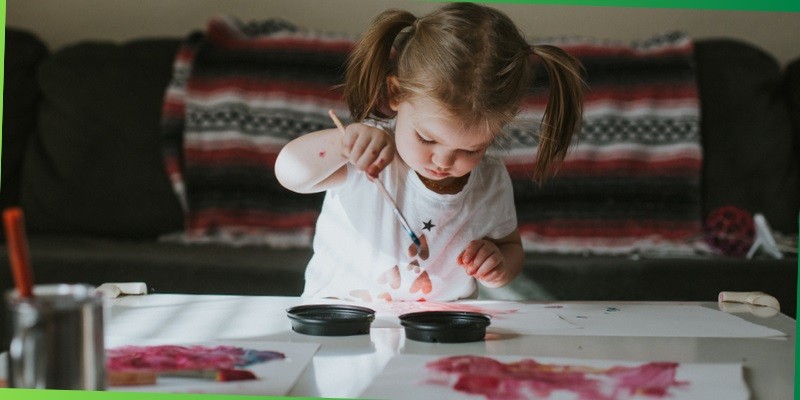Last Updated on January 15, 2025
A child can typically swim independently around the age of four. Introducing children to swimming at a young age can help them develop the necessary skills to navigate the water safely.
While the specific age may vary, teaching children to swim early on can provide them with essential life-saving skills and build their confidence in the water. As a parent or guardian, it is important to ensure that swimming lessons are conducted under proper supervision and with trained instructors to ensure the child’s safety.
By starting swimming lessons at an appropriate age, children can learn to swim independently and have a greater ability to enjoy water-related activities.
Factors To Consider
In determining when a child can swim independently, there are several important factors to consider. These factors include a child’s physical development and readiness, cognitive development, understanding of water safety, emotional and behavioral readiness, and their confidence and comfort in the water. Each of these factors plays a crucial role in a child’s ability to swim independently and should be taken into account when determining when it is appropriate for a child to swim without assistance.
Physical Development And Readiness
Physical development and readiness are key factors in a child’s ability to swim independently. A child needs to have the necessary muscle strength and coordination to perform swimming strokes and movements effectively. Additionally, their gross motor skills, balance, and proprioception (the sense of the body’s position in space) play a significant role in their ability to navigate the water with confidence and ease.
Muscle Strength And Coordination
A child’s muscle strength and coordination are essential for swimming independently. As they develop and strengthen their muscles, they become better equipped to perform the necessary movements and strokes required for swimming. Coordination, in particular, is crucial for effectively coordinating their arms, legs, and body movements while in the water.
Gross Motor Skills
Gross motor skills, which involve the use of large muscle groups, play a vital role in a child’s swimming ability. These skills include activities such as kicking, arm movements, and body rotation. A child’s ability to perform these movements with control and coordination directly affects their ability to swim independently.
Balance And Proprioception
Balance and proprioception are closely linked to a child’s swimming ability. Balance helps them maintain stability and control in the water, while proprioception allows them to understand their body’s position and movement in relation to the water. Both of these factors contribute significantly to a child’s ability to swim confidently and independently.
Cognitive Development
A child’s cognitive development also plays a role in their swimming ability. They need to understand water safety rules and have the cognitive skills to assess risks and make appropriate decisions in and around the water. This includes knowing when it is safe to swim independently and understanding potential dangers or hazards that may arise.
Water Safety
Having a solid understanding of water safety is crucial for any child who wants to swim independently. They need to know and follow important safety rules, such as never swimming alone, staying within designated areas, and knowing how to respond in emergency situations. Teaching children about water safety from an early age lays a strong foundation for their ability to swim independently later on.
Following Instructions And Rules
Being able to follow instructions and rules is essential for a child to swim independently. They should be able to listen to and understand instructions given by instructors or adults, as well as follow any safety rules or guidelines set for swimming. This ability ensures that they can navigate the water safely and confidently.
Ability To Assess Risks
As children develop their cognitive abilities, they gain the capacity to assess risks and make informed decisions. This skill is particularly important for swimming independently, as they need to be able to recognize and respond to potential dangers or hazards in the water. The ability to assess risks contributes to a child’s overall safety and confidence in swimming independently.
Emotional And Behavioral Readiness
A child’s emotional and behavioral readiness is another factor to consider when determining if they are ready to swim independently. They should have the ability to manage frustration and anxiety, as swimming can sometimes be challenging or unfamiliar. Additionally, they should display confidence and a positive attitude towards water activities.
Confidence In Water
Confidence plays a crucial role in a child’s ability to swim independently. They should feel comfortable and secure in the water, with a belief in their own swimming abilities. Building confidence in water activities through gradual exposure and positive experiences can greatly contribute to a child’s readiness to swim independently.
Comfort With Submersion
Being comfortable with submersion is an essential skill for swimming independently. Children should be able to hold their breath and submerge their face without fear or discomfort. This skill is important for performing swimming strokes and movements effectively while maintaining safety.
Ability To Manage Frustration And Anxiety
Swimming independently can sometimes be challenging or unfamiliar for children, leading to frustration and anxiety. It is important that a child has developed the ability to manage these emotions appropriately. This skill allows them to persevere through difficulties and adapt to new swimming techniques or situations while maintaining a positive attitude.
Age-related Swimming Milestones
Children can start learning to swim independently around the age of four. At this age, most kids have the developmental ability to stay afloat and learn proper swimming techniques without the need for floaties. Introducing them to activities like “cuddle kicks” can help build their confidence in the water.
Infants And Toddlers (6 Months – 2 Years)
At this young age, infants and toddlers should be introduced to the water in a playful and positive manner. This can be done through activities such as splashing, pouring water, and playing with water toys. The goal is to create a safe and enjoyable environment that fosters their comfort and familiarity with water.
As infants and toddlers become more comfortable in the water, they can start learning basic water skills, such as kicking their legs and moving their arms in the water. These activities help them develop a sense of buoyancy and control in the water.
By the age of 2, children should be able to float on their backs with support and guidance from an adult. This skill allows them to experience the sensation of floating and builds confidence in the water.
Preschoolers (3 – 5 Years)
During the preschool years, children should start learning basic swimming skills, such as paddling their arms and kicking their feet. They should also begin to practice breath control, learning to hold their breath while underwater and exhaling when resurfacing.
Preschoolers should be taught how to enter and exit the water safely, using appropriate techniques such as stepping in and out or using a ladder. This ensures that they can enter and exit the water independently and with confidence.
By the age of 5, most children should be capable of moving independently in the water for short distances. This includes propelling themselves forward using both their arms and legs.
School-age Children (6 – 12 Years)
As children grow older, they should continue to develop their swimming skills by learning different swim strokes, such as freestyle, backstroke, breaststroke, and butterfly. This allows them to become proficient in various swimming techniques.
School-age children should focus on building their stamina and endurance in the water. They should be encouraged to swim longer distances and challenge themselves to improve their overall fitness and swimming abilities.
By this age, children should have a good understanding of water safety rules and their responsibilities when swimming. This includes knowing how to recognize and avoid potential hazards in and around water, as well as understanding the importance of swimming with a buddy.
Remember, each child is unique, and the age at which they achieve these swimming milestones may vary. It is important to provide a supportive and safe environment for children to learn and practice their swimming skills.
Importance Of Swimming Lessons And Parental Guidance
Swimming is an essential life skill that offers numerous physical, mental, and emotional benefits for children. Learning to swim independently not only promotes safety but also boosts confidence and provides opportunities for socialization. To ensure children develop their swimming skills effectively, it is vital to consider the importance of formal swimming lessons and the role of parental guidance throughout the process.
Benefits Of Formal Swimming Lessons For Skill Development
Formal swimming lessons, conducted by qualified instructors, play a crucial role in helping children develop essential swimming skills. Here are some key benefits of enrolling your child in formal swimming lessons:
- Structured learning environment that follows a progressive curriculum
- Qualified instructors with expertise in teaching swimming techniques and safety practices
- Opportunity for children to interact with peers and develop social skills
- Development of coordination, strength, and endurance through various swimming exercises
Qualified Instructors And Structured Learning
Qualified swimming instructors possess the necessary knowledge and skills to teach children the fundamentals of swimming. They create a structured learning environment that allows children to progress at their own pace while building a strong foundation in swimming techniques and safety practices.
Water Safety Education And Awareness
Understanding water safety is crucial for every child. Formal swimming lessons provide an ideal platform for children to learn about water safety practices and develop the necessary awareness to navigate aquatic environments confidently.
Socialization And Confidence Building
Swimming lessons offer children the opportunity to interact with their peers, enhancing their social skills and building lasting friendships. Additionally, as children learn and master new swimming techniques, their confidence grows, positively impacting their overall self-esteem.
Parental Role In Encouraging Independence And Skill Progression
Parents play a vital role in supporting their children’s swimming journey. Here’s how parents can actively contribute to their child’s independence and skill progression:
- Create a positive and supportive environment by encouraging and praising their child’s efforts and achievements
- Supervise and reinforce safety practices both during swimming lessons and when swimming independently
- Ensure continual practice and exposure to water activities to improve swimming skills
Creating A Positive And Supportive Environment
Creating a positive and supportive environment is crucial to foster a love for swimming in children. By maintaining a positive attitude, providing motivation, and offering rewards for progress, parents can enhance their child’s enthusiasm and commitment to swimming.
Supervision And Reinforcement Of Safety Practices
While swimming lessons teach children essential safety practices, parents should always supervise their children when they are in or near water. Regular reinforcement of safety rules and practices will help ensure that children have a strong understanding of water safety.
Continual Practice And Exposure To Water Activities
Swimming is a skill that requires regular practice and exposure to various water activities. Parents can plan family outings to pools, beaches, or recreational centers, allowing their children to apply their swimming skills beyond formal lessons and build confidence in different aquatic environments.
By understanding the importance of swimming lessons and actively participating in their child’s swimming journey, parents can contribute to their child’s independence, skill progression, and overall water safety.

Credit: theswimlessonpeople.com
Frequently Asked Questions On What Age Can A Child Swim Independently?
What Age Can Kids Go Swimming On Their Own?
Children can typically swim independently around the age of four. At this age, they are developmentally able to stay afloat and learn proper swim techniques without needing floaties. It’s important to ensure proper supervision and safety measures are in place when children are swimming on their own.
At What Age Can Babies Swim On Their Own?
Children can start swimming on their own at around age four. At this age, they are developmentally ready to stay afloat and learn proper swim techniques. Prior to that, parental supervision and floatation devices are essential for water safety.
What Age Can A Child Swim Without Floaties?
Most children can swim without floaties at around the age of four. At this age, they are developmentally ready to stay afloat and learn proper swim techniques. Introducing Kids to Swimming: An Age-by-Age Guide – Sunplay.
How Do I Teach My 4 Year Old To Swim?
Teaching a 4-year-old to swim can be a fun and rewarding experience. Start with basic techniques, like “cuddle kicks” where you hold them and encourage kicking on the water’s surface. You can also practice sitting positions in the water. Remember, patience is key!
What Is The Average Age For A Child To Learn To Swim Independently?
The average age for a child to learn to swim independently varies, but generally, it could be around 3 or 4 years old.
Conclusion
The age at which a child can swim independently varies depending on their individual development and prior swim experience. While the general consensus is that most children around the age of three or four can begin to swim competently, it is important to consider their readiness and provide proper guidance and instruction.
By introducing activities like “cuddle kicks” and providing a supportive environment, parents can help their children develop water confidence and essential swim techniques. Remember, each child is unique, so it’s crucial to prioritize their safety and tailor the learning process to their specific needs.







